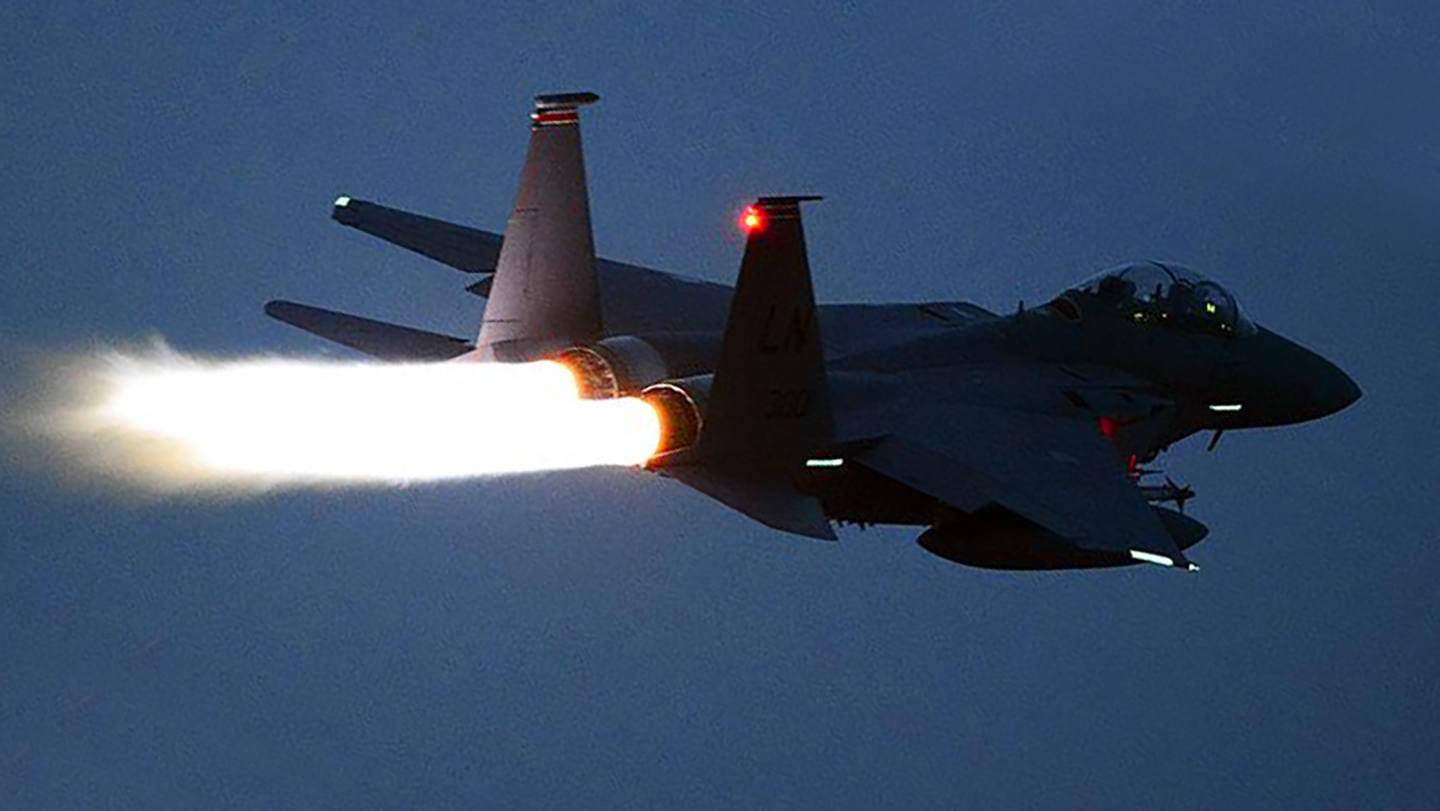After shooting down so many Iranian drones headed toward Israel that their F-15E Strike Eagle ran out of air-to-air missiles, the jet’s crew decided they would go after one more. Ordered to use any weapon available, pilot Maj. Benjamin “Irish” Coffey and weapons systems officer (WSO) Capt. Lacie “Sonic” Hester dropped altitude and speed to approach the low and slow-flying drone. Though Coffey and Hester could barely see it, they unleashed a volley from the Strike Eagle’s 20mm Gatling Gun, which can fire upwards of 6,000 rounds per minute.
Despite the rapid rate of fire, the Gatling gun missed the drone, Coffey told CNN.
“You feel the terrain rush, you feel yourself getting closer and closer to the ground,” Coffey told CNN. “The risk was just too high to try again.”
As we have discussed multiple times in the past, firing a fighter’s gun against a small, low, and slow moving target is far more dangerous than many realize. The speed and engagement dynamics involved can result in controlled flight into the ground below as well as ramming into the very object you are trying to shoot down. There is also the danger of the grenade-like cannon rounds impacting the ground below over a relatively wide area, potentially killing innocent people. Doing it at night is a whole other level of danger.
That Coffey and Hester had to resort to the gun speaks volumes about the challenge of defeating a large-scale aerial attack and using multi-million dollar advanced weaponry against cheap and far-less sophisticated drones that can evade even advanced radars like those aboard F-15Es.
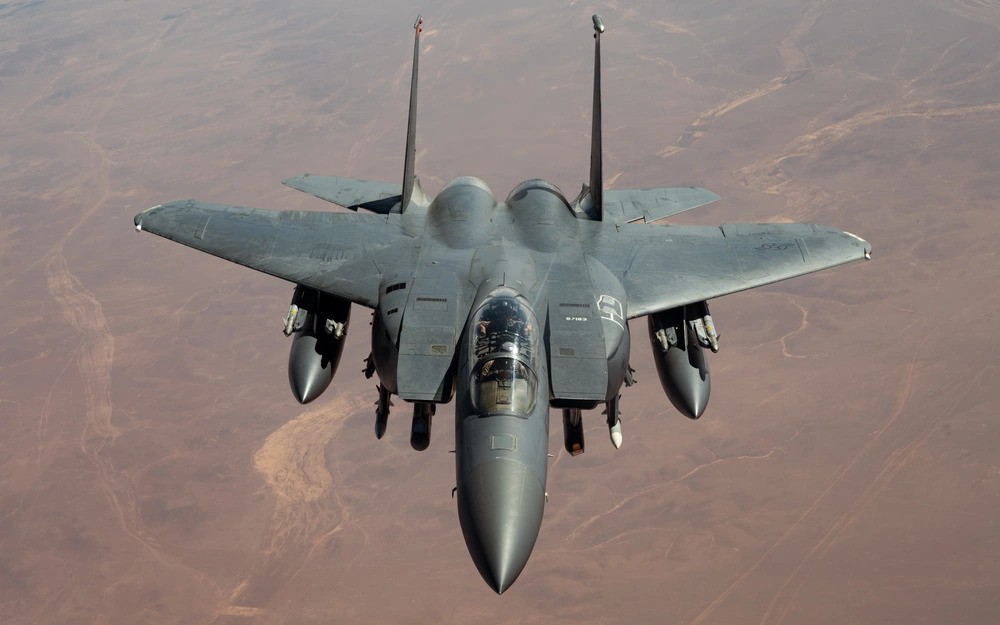
Weaponized drones with long-range capabilities have become ubiquitous in Ukraine and across the Middle East. Meanwhile, the fighter pilots chasing down the Iranian drones didn’t have much time before Iran’s onslaught to practice, Strike Eagle pilot Lt. Col. Timothy “Diesel” Causey told CNN.
The drones “are a low cost, low risk for the enemy to employ,” said Causey. “They can send out massive amounts of them and we have to engage them to protect civilians and to protect our allies. We hadn’t started practicing on a large scale yet.”
“You’re talking about something that is on the very edge of a fighter aircraft’s ability to detect — what we call ‘find, fix, track, target and engage,’” Coffey explained. “The best radar in the inventory is in this airplane behind us, and no one really knew whether or not its capability to find these [drones] even existed.”
All told, forward-deployed F-15Es from units based at RAF Lakenheath in England and Seymour Johnson Air Force Base in North Carolina, played an outsized role in shooting down more than 70 Iranian drones on April 13 and 14. The defense against 300 missiles and drones launched from Iran and Houthi-controlled territory in Yemen was what the Air Force called its “largest air-to-air enemy engagement in over 50 years.” Coalition forces and Israel destroyed nearly 99% of all inbound weapons.
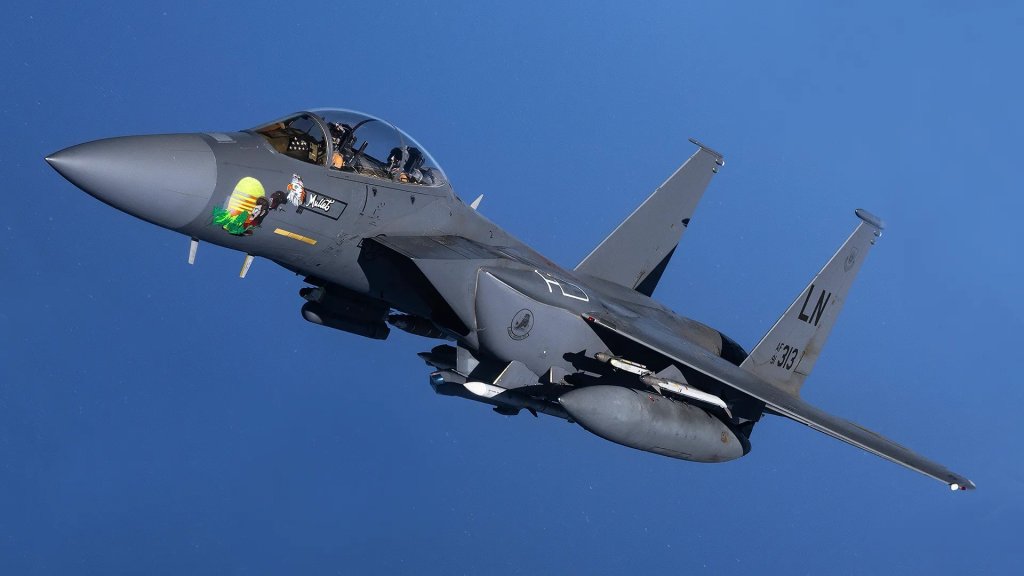
Causey, the 494th FS commander, chalked up his team’s success to remaining focused.
“We all fell into an execution rhythm: call, shoot, and confirm the target was destroyed before we moved on to the next task we had to accomplish to keep everyone safe,” Causey said.
The scope and challenges of the effort to take down the threats heading toward Israel were not lost on Air Force leadership.
During an awards ceremony earlier this week at RAF Lakenheath in the U.K., Coffey and Hester were awarded Silver Star medals, the third highest honor for valor in combat. Hester is the first woman in the Air Force ever to receive one.
The Silver Stars were presented “based on the aircrew’s gallantry in action repelling the Iranian attack as the airborne mission commanders directing coalition forces during the unprecedented large-scale attack against Israel,” the Air Force stated.
The team “engaged the enemy multiple times throughout the night despite having severe aircraft emergencies and while under falling debris at the expeditionary base caused by hostile fire from the enemy,” the Air Force explained.
“Although intelligence provided the numbers of how many (one-way attack) drones we could expect to see, it was still surprising to see them all,” said Hester.
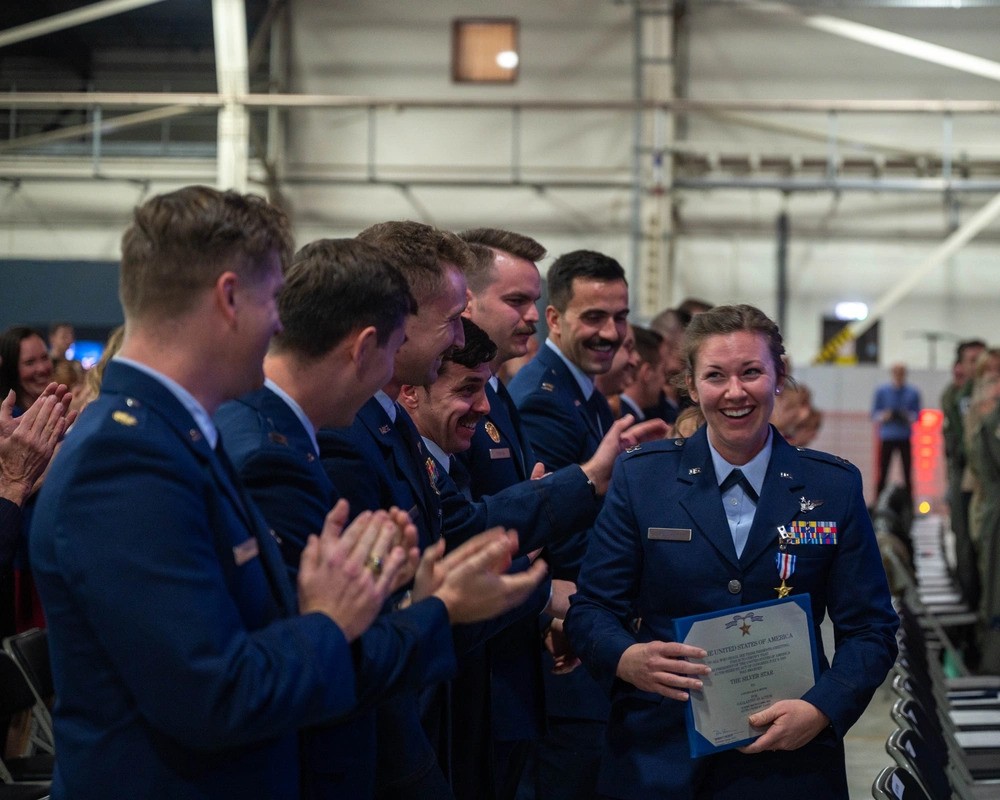
“It takes a high-performing team with high-performing individuals to be able to find these things to begin with, and then to engage it,” said Coffey, who described the challenges the mission presented and how the teams worked in tandem.
“We have the pilots working the air-to-air radar, (to) make sure they don’t hit the ground, they don’t hit their element leads and (we’re) employing and we start to get another data point and another data point and another data point,” he explained.
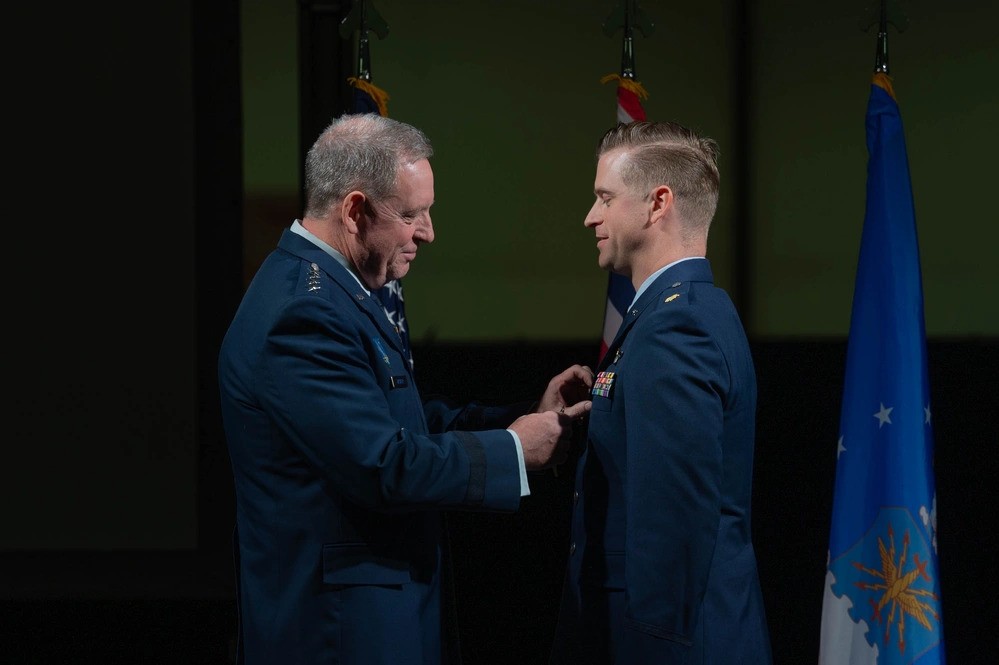
Air Force Gen. James Hecker, head of U.S. Air Forces in Europe (USAFE), as well as Air Forces Africa (AFAFRICA) and NATO’s Allied Air Command, also awarded six Distinguished Flying Crosses with the valor device, four Distinguished Flying Crosses with the combat device, four Distinguished Flying Crosses, two Bronze Stars, seven Air and Space Commendation Medals and seven Air and Space Achievement Medals.
Other aircrews recognized during the ceremony received Distinguished Flying Crosses “for their commitment to their mission, flying their F-15Es through a complex and dangerous airspace filled with engagements by active air defense systems and falling debris multiple times that night,” the Air Force noted.
Awards were also presented to those on the ground who kept the aircraft flying despite ballistic missiles and Patriot effectors zipping overhead, and falling debris.
That evening the 494th Fighter Generation Squadron (FGS), represented by 66 Airmen, “launched 14 F-15E sorties, including scrambling six alert aircraft amid a backdrop of active base defenses destroying enemy targets overhead,” according to the Air Force.
Maj. Clayton Wicks, operations supervisor, and Master Sgt. Timothy Adams, lead production superintendent for the 494th FGS that evening were awarded the Bronze Star, a United States Armed Forces decoration awarded to members of the military for heroic or meritorious service in combat, “for their actions that evening to ensure every combat-capable aircraft was in the fight and ensure the airfield remained viable for operations,” the Air Force explained.
“It still gives me chills when I think about how well the team worked together,” said Adams. “I wasn’t the linchpin of that. I was just the guy holding the radio, the node between ops and maintenance. The team is who made it happen. The APG [aircraft maintenance] driver, the weapons teams, the POL [fuels], all those people working together, not running, not dropping the hoses, not just freaking out and worried about their own lives. How could you not be proud of that?”
“Our airmen stood firm alongside our coalition partners to protect Israel from a barrage of one-way attack unmanned aerial vehicles and missiles,” said Hecker. “The success of our Airmen demonstrates how the U.S. Air Force is ready to respond to, and defeat, evolving threats.”
Contact the author: howard@thewarzone.com
